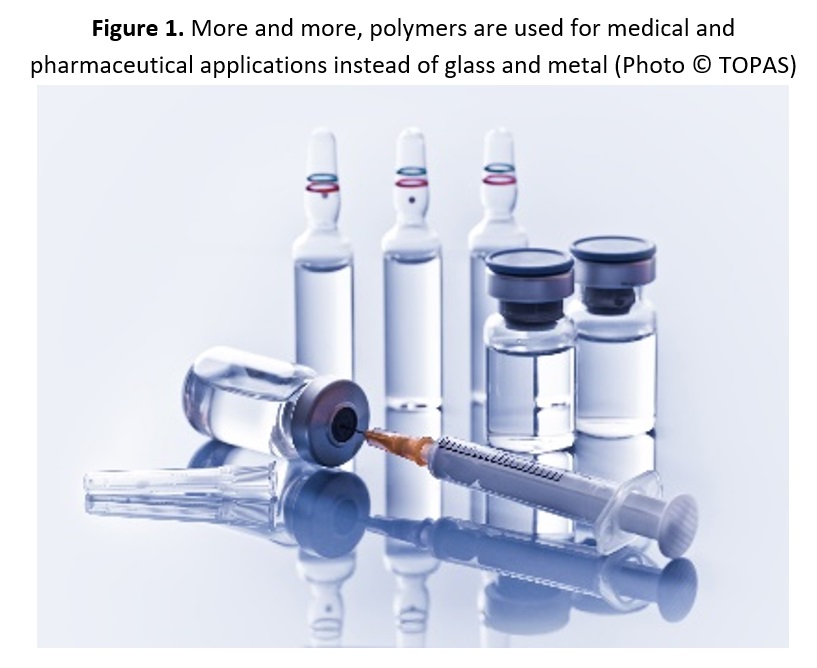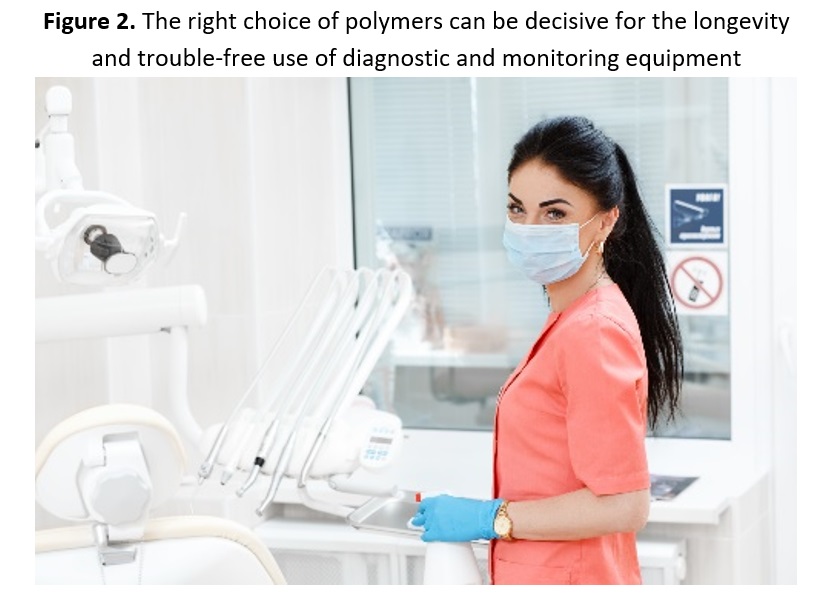Materials Science
Choosing the right polymer for medical devices 16th January 2018
By Anja Flossbach, Mechanical Engineer and Business Development Manager at VELOX
Anja Flossbach, Mechanical Engineer and Business Development Manager at VELOX, explains the factors at stake when choosing t

Anja Flossbach, Mechanical Engineer and Business Development Manager at VELOX, explains the factors at stake when choosing the right material for the development of medical and pharmaceutical devices.
The use of polymers in medical and pharmaceutical devices has been growing steadily in recent years, replacing glass, metal and other conventional materials. For instance, polymers substitute glass in pharmaceutical applications for syringes and vials and replace metal in single use surgical instruments. However, when it comes to the right choice of polymer, some pains and pitfalls must be taken into consideration.
“The development of medical and pharmaceutical devices takes time and money, and is strictly regulated”, said Anja Flossbach, Mechanical Engineer and Business Development Manager, Medical Plastics, at VELOX. “The right choice of material is crucial for developers to succeed when it comes to compliance regulations, certification processes and providing a high-quality product.”

According to Flossbach, at least five criteria should be evaluated when selecting materials for specific medical or pharmaceutical applications: material properties; design; regulatory issues; handling aspects; and price.
“One has to consider the manufacturer’s design and application specifications”, explains Flossbach. “On the other hand, the material properties are key aspects to be scrutinized with regard to these specifications. And, last but not least, pricing as well as regulatory and handling aspects are critical for products’ successful realization and market entry.”
Preventing colour change and breakage
A key challenge with materials for medical devices are the prevention of colour changes and ensuring sufficient robustness to preclude the devices from breaking. Housings for diagnostic and monitoring equipment for hospitals, for instance, often have to withstand highly aggressive and concentrated cleaning agents. This can cause stress cracking in the plastics, which may allow fluids to penetrate into the medical device, damaging expensive electronics.

“Upon examining the application specifications, we might introduce a polycarbonate/polyethylene terephthalate (PC/PET) for hospital equipment, whereas acrylonitrile butadiene styrene (ABS) or PC/ABS could be considered for homecare devices, where less aggressive cleaning agents are typically used,” explained Flossbach.
Similarly, different polymers may react differently when it comes to the sterilization of medical devices. To avoid colour change, or loss of mechanical properties in processes like steam sterilization, materials have to be particularly resistant, notably to high temperatures.
The right TPU for medical implants
Implantable materials are also associated with their own specific issues, for example biocompatibility or time restriction for implants in the body. Many medical-grade polymer suppliers do not allow the implantation of their materials into the body, or they restrict it to particular time limits (typically 24 hours or 30 days). Nevertheless, there are thermoplastic polyurethane (TPU) options for long-term implant applications (medical device classification 2a or higher).
“Our partner Lubrizol does not restrict the use of their TPUs to 30 day implants. Device designers are free to select from a wide TPU portfolio the most suitable grades to be tested and considered for each specific application”, said Flossbach.
Also, most materials that VELOX provides for medical and pharmaceutical use are biocompatible.
What’s in them?
The production of medical devices presents significant challenges from both engineering and legal perspectives. The industry is highly regulated and, especially in the case of customized materials for new medical devices, this begins with regulatory approval. This requires the device manufacturer to know exactly what is in the compound. Therefore, it is appreciated if the compounder provides full transparency about the formula of the compound.
Designed for manufacturability
Modern medical device manufacturing requires a high level of process control. Even in the initial R&D phase, engineers are beginning to design their products for manufacturability. This means products can be more precision-engineered for more rapid production, tighter tolerances and more advanced specifications. The realization of a new design can be very costly, and failure to meet targets may lead to substantial losses for the manufacturer.
“It is crucial for us at VELOX to keep the overall view on all these aspects. To really add value for our customers and help them choose the right material for their specific application, we focus on technical assistance and engineering support by working with our customers from the very early design stage”, Flossbach said.
Over the past 25 years, VELOX’s medical plastics team has built up a broad in-house expertise of specific materials, finishings, applications and market developments. The company also provides regulatory support, documentation and comprehensive after-sales support.
Contact
Anja Flossbach, Business Development Manager, Medical Plastics, VELOX GmbH, Brandstwiete 1 20457 Hamburg, Germany
T: +49 (0)40 369 688 949; E: medical@velox.com
T: +49 (0)40 369 688 949; E: medical@velox.com



